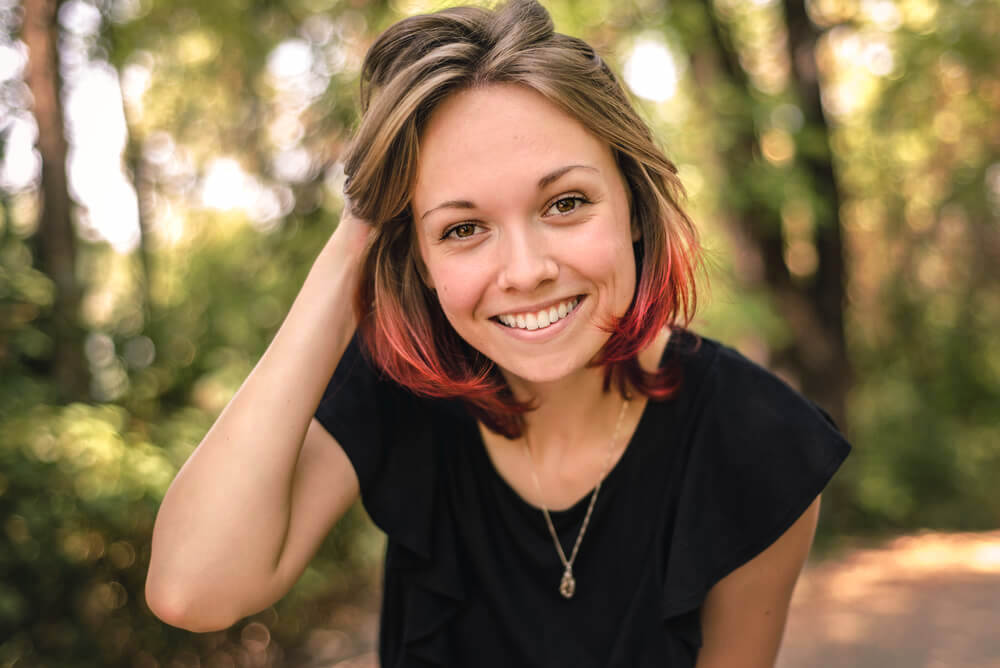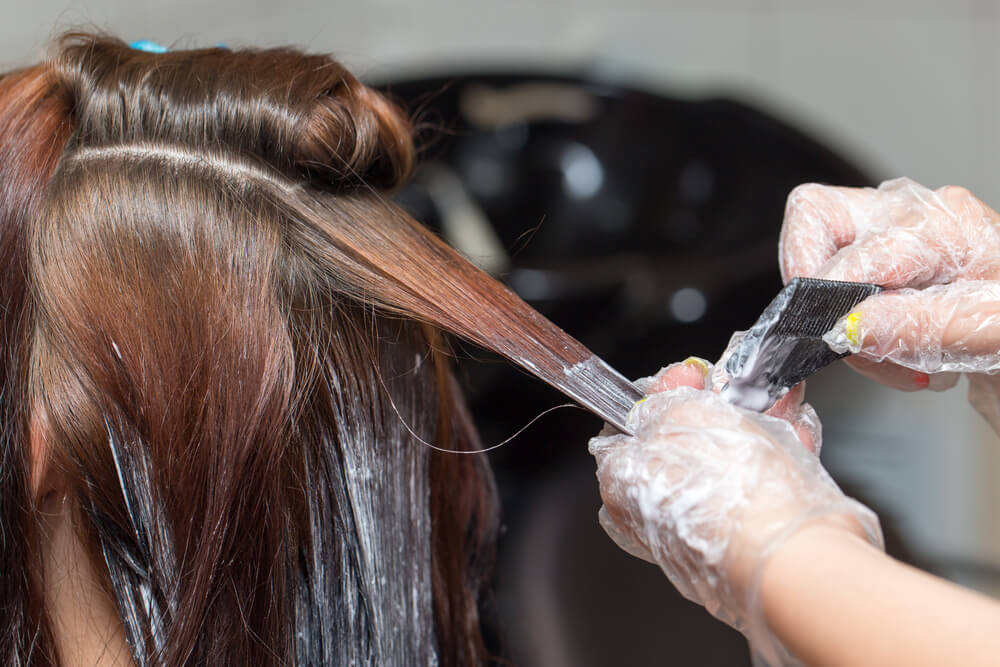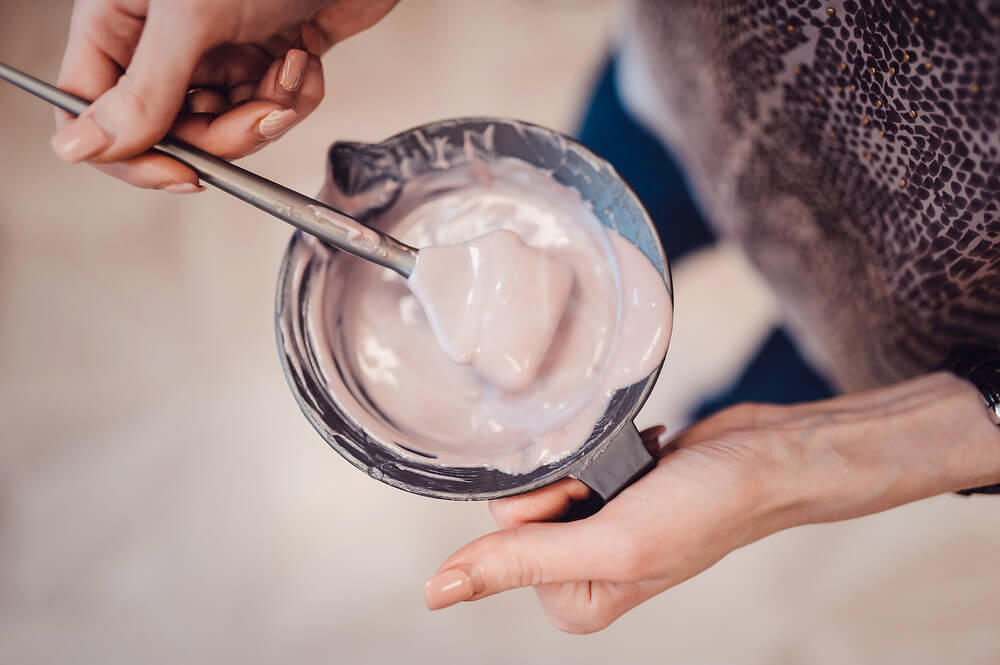How to Get Rid of Dip Dyed Hair Color

Dip-dyeing is such a fun way to add some color and character to your hair.
Have you been wanting to give dip-dyeing a try?
All you need to do is follow these ten steps:
Choosing A Color
This is the step that people tend to have the most fun with. For some, it can take a while, whereas others know immediately which color they want to go for.
Need some inspiration?
Here are some dip-dye styles that are especially trendy at the moment:
- Emerald or aqua on black
- Shocking pink
- Silver
- Magenta on brown
- Yellow on blonde
- Icy blue on blonde
- Lavender
Dip-dyeing can be as subtle or as bold as you want it to be!
Can't find the exact color you want, and want to know if you can mix different shades?
The formulas that each dye brand uses will be different, meaning that mixing dyes from different brands isn't a good idea. However, mixing different shades from the same brand will likely give you good results.
Decide on Where Your Dip-Dye Ends
This is another step that can often take quite a bit of thinking…
How much of your hair do you actually want to dip-dye?
When dip-dyeing for the first time, many people opt for just a small amount at the ends of their hair, as this still keeps things quite subtle.
However, for a more dramatic look, do not be afraid to dip-dye a larger part of your hair.
The length of your hair will also influence how far up you take the dye…
What's the shortest hairstyle that can be dip-dyed?
Probably a bob. Anything shorter than this would be quite hard to work with. The longer your hair, the more creative you can get with dip-dyeing.
Bleaching
Let's begin by answering the question that you're probably thinking…
Is it really necessary to bleach my hair before dip-dyeing?
That depends on how intense and long-lasting you want the color to be. Your current hair color will also make a difference.
If you are worried about the damage that bleaching can cause, then by all means skip this step. It doesn't mean that your dip-dye won't be perfect, it just means that the colors won't be as bright, and they will fade much faster each time you wash your hair.
Decided that you want to bleach your hair first?
Ideally, you would go to a professional to have this done, especially if it is your first time.

If you want to do it yourself, go for a weaker volume of product, such as a number 20. Although this will take slightly longer to work than a higher number, it causes far less damage.
Make sure that you are wearing old clothing, or have a towel around your shoulders. The bleach, as well as the dye that you will be using, will both stain.
Follow the instructions when it comes to mixing the bleach powder with the developer.
After that, follow these steps:
- Divide your hair into multiple sections. Either tie them off or clip them off, but do this at the point at which you want your dye to stop
- Take the first section and apply the bleach up to the clip or hair tie. Wrap this section up in some tin foil or plastic, as this will prevent the bleach from coming into contact with any other surfaces
- Do the same with the rest of your hair
- Leave the bleach on for about 15 minutes
- Rinse the bleach off your hair
Washing, Conditioning and Drying
After rinsing the bleach off your hair, you will then need to shampoo and condition it.
While your normal shampoo will do, you may find it beneficial to use a purple shampoo on the bleached sections.
What is a purple shampoo?
It's basically a toning shampoo that removes the brassy and dull tones in blonde or bleached hair.
How?
It's simple – purple is directly opposite yellow on the color wheel, meaning that the two colors cancel each other out. By applying purple to yellow, you won't really be able to see the yellow any more.
Leave your purple shampoo in your hair for a couple of minutes, so that it has enough time to get to work. Then, rinse out and follow up with your normal conditioner.
When it comes to drying…
Ideally, leave your hair to air dry. After all, it has already gone through quite a lot, and is about to go through more.
If you would prefer to blow dry your hair, make sure that you do not focus the heat on the parts of your hair that you have just bleached.
Re-Bleaching
If you think that the bleach hasn't lightened your hair enough, you may need to re-bleach it. This is a problem that those with darker hair often face.
However, this means that you will need to wait a while before you can go ahead with the dip-dyeing.
How long should you wait?
Give yourself a few days after bleaching your hair for the first time before re-bleaching it, as you don't want to cause any serious damage to your locks.
Perform a Strand Test
This is an optional step, but is one that is worth considering if you are unsure about the dye color you have chosen.
A strand test enables you to test this out on a discreet part of your hair, giving you the opportunity to change your mind or adjust the color as needed, before you apply it to the rest of your hair.
This is best done after you have bleached your hair, since this will give you an idea of the true effect that your dye will have.
How do you perform a strand test?
Just follow these steps:
- Choose a discreet strand of hair to test out. Opt for a strand that can easily be hidden within or underneath the rest of your hair, rather than one that is right at the top
- Clip away the rest of your hair, so that you don't have to worry about any other strands coming into contact with the dye
- Wear protective gloves and apply a small amount of your hair dye to your chosen strand
- Wash it off after the time indicated on the packaging
- Give your hair dye 24 hours to settle before judging it. If you are happy with how it looks, then you will feel much more confident about continuing on with the rest of your hair
Applying Conditioner
Once your hair is dry, you will need to comb it well and then section it off again.
Make sure that you have parted it in the same place where you usually part your hair. This will give you much better results when you come to style your newly dip-dyed hair.
Then, you will need your conditioner.
You are probably thinking…
But I've already conditioned my hair!
Yes, but the conditioner serves a different purpose this time…
Apply your conditioner a couple of inches above the bleached portion of your hair.
Why?
Because this will prevent your dye from traveling too far up your hair. It will also help the color to naturally fade into your natural hair color.
Yes, with dip-dyeing you do want their to be quite a contrast between the end of the dye and your natural hair color. Anything less than this moves into ombre and balayage territory. However, you still want to avoid overly harsh lines as much as you can.
Applying the Color
Your hair dye will likely come with an applicator, so make sure that you use this! It will help to ensure that the dye is spread evenly onto your hair.

Apply the hair dye to the sections of your hair that are bleached, taking the dye up to where the conditioner has been applied.
As you apply the dye to each section, wrap each one up.
Check the instructions on the dye box to see how long you are meant to leave the hair dye in your hair for. It will usually give you a time frame, so opt for the longest time, as you want to give your hair as much time as possible to soak up the color.
Rinsing and Conditioning
Once you are ready to remove the dye, you will need to rinse your hair again.
Do this thoroughly, until the water runs clear.
You can then apply a conditioner. Ideally, opt for one that has been designed for colored hair, as this will help to ensure that the color lasts for as long as possible.
Once you are done, dry your hair.
Dip-Dyeing Aftercare
The perfect dip-dye is one that remains fresh and vibrant for as long as possible, and that all comes down to the quality of your aftercare.
What do you need to do to prolong the life of your dip-dye?
To begin with, you need to cut back on how often you wash your hair.
Why?
Because shampoos contain ingredients that strip away color.
So, how often should you be washing your hair?
Aim for twice a week, try to avoid applying the shampoo directly to the dyed sections of your hair. Since shampoo should only really be applied to the roots of your hair anyway, this shouldn't be too difficult.
As mentioned above, your shampoo and conditioner should also be formulas that have been designed for colored hair. These will contain less sulphates.
What's wrong with sulphates?
When applied to the hair, they cause the hair shaft to swell. This then allows the hair color to leach out, fading it so much faster.
Your conditioner is just as important…
Hair becomes quite fragile and delicate when it has been dyed, especially if you have bleached it first.
A conditioner will help to strengthen and repair your hair, while also forming a protective barrier between each strand of hair and the environment around it. As you can imagine, this goes a long way in protecting your hair color too, preventing it from fading.
Do you use heated hair styling tools?
If your answer is yes, even if you don't use them very often, you need to make sure that you are using a heat protecting product. These can be in the form of sprays, gels, creams and more, and basically prevent heated styling tools from damaging the hair.
Of course, they can only do so much. So, while heat protecting products are essential for preserving your dip-dye, avoiding heated styling tools as much as you can would be even better.
Another thing that can cause your hair color to fade is the sun…
You (hopefully) use a sunscreen on your skin to protect it from UV damage, but what about your hair?
There are now several products out there that can protect your hair from sun damage. These are usually available in the form of a lightweight spray, and can easily be spritzed onto your hair before or after styling.
One more thing that you can do is use hair masks on a regular basis.
How do hair masks help?
They provide the hair with intense nourishment, and also have powerful protecting properties that will help your dip-dye color to last for longer.
Hair masks are especially important if you are someone who often changes the color of their hair.
There is no denying that dip-dyeing your hair at home can take quite a bit of time, skill and patience. It can definitely be a fun process, but, if this is your first time dip-dyeing your hair, you may want to have a professional do the job. This will ensure that your first-time results are nothing but the best, and will also teach you more about the process itself, so that you can replicate this yourself at home in the future.
How to Get Rid of Dip Dyed Hair Color
Source: https://www.herstyler.com/10-steps-for-the-perfect-dip-dye/
0 Response to "How to Get Rid of Dip Dyed Hair Color"
Post a Comment